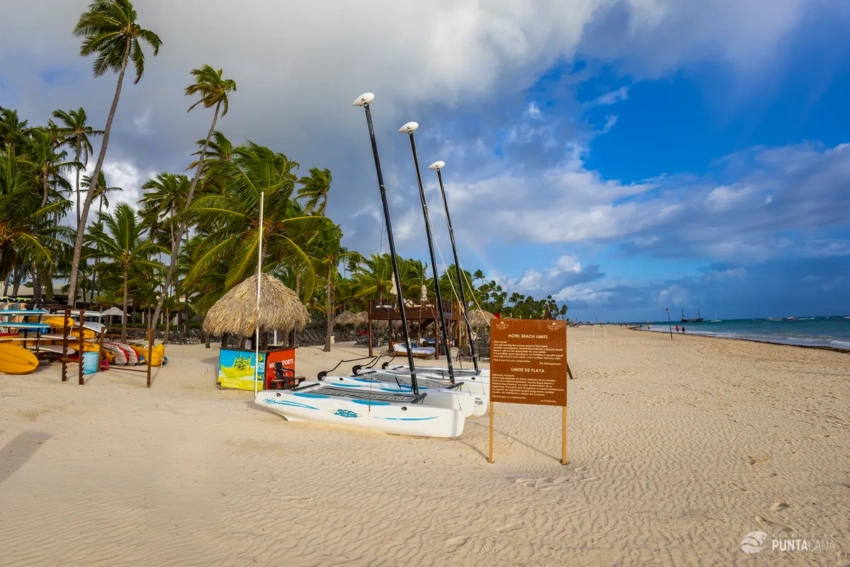Traveling with Kids: Ensuring a Smooth and Family-Friendly Experience
Preparing for Your Family Adventure

Traveling with Kids: Ensuring a Smooth and Family-Friendly Experience
Embarking on a family journey is an exciting endeavor that promises memories to last a lifetime. However, the foundation of a successful trip lies in meticulous preparation and organization. By planning ahead, you can ensure a seamless and enjoyable experience for both parents and children.
1. Choosing Family-Friendly Destinations
Selecting the right destination is crucial when traveling with children. A family-friendly locale is not only accommodating to young travelers but also provides a mix of activities that cater to both adults and kids. Considerations should include:
- Accessibility: Opt for destinations that are easy to reach with minimal travel time or layovers, which can be challenging with young children.
- Safety and Health: Research the safety ratings, healthcare facilities, and vaccination requirements of potential destinations.
- Activities and Attractions: Look for places that offer kid-centric attractions like theme parks, zoos, or museums with interactive exhibits. Many destinations provide educational experiences that are both fun and enriching.
For instance, Orlando, Florida, is a perennial favorite for families due to its world-renowned theme parks and family-friendly accommodations. Alternatively, consider destinations like San Diego, California, or Washington, D.C., which offer a blend of history, culture, and outdoor activities suitable for all ages.
2. Packing Essentials for Kids
Packing efficiently is an art, especially when it involves children. A well-prepared suitcase can be the difference between a smooth journey and a stressful one. Here’s a guide to ensure you have all the essentials:
- Comfortable Clothing: Depending on the climate, pack layers or breathable fabrics to keep your child comfortable during the day and night.
- Entertainment: Include books, travel-sized games, or tablets with pre-downloaded movies and educational apps to keep them engaged during transit.
- Health and Hygiene: Bring along a small first-aid kit, necessary medications, and travel-sized toiletries. Don’t forget hand sanitizers and wet wipes for quick clean-ups.
- Snacks and Drinks: Healthy snacks and reusable water bottles are lifesavers, especially during long waits or layovers.
Essential Packing Checklist for Kids
| Category | Items | Tips |
|---|---|---|
| Clothing | Layers, Pajamas, Swimwear | Check weather forecasts before packing |
| Entertainment | Books, Tablets, Toys | Preload apps and videos to save data |
| Health | First-Aid Kit, Medications | Consult pediatrician for travel health advice |
| Snacks | Granola Bars, Fruit Snacks | Choose non-perishable items |
3. Involving Kids in the Planning Process
Engaging children in the planning stages of your trip can instill a sense of excitement and responsibility. Involving them not only makes them feel valued but also helps them understand the different aspects of travel.
- Destination Research: Encourage older kids to research potential destinations and present their findings. This can be an exciting geography lesson and a way to pique their interest.
- Activity Selection: Let children choose some activities or attractions they want to visit. This ensures they have something to look forward to and feel more in control of their adventure.
- Packing: Allow kids to pack their own backpack with toys, books, or snacks they want to bring. This teaches responsibility and ensures they have familiar items to comfort them.
By planning ahead and getting everyone involved, you set the stage for a delightful family adventure. The anticipation and preparation contribute to the overall experience, ensuring both parents and kids are ready for the journey ahead.
Section 2: Navigating Transportation Challenges
Traveling with kids can be a rewarding experience, but it often comes with its own set of challenges, especially when it comes to transportation. From navigating airports to enduring long car rides, planning ahead can make all the difference in ensuring a smooth and stress-free journey for the whole family.

Punta Cana, drone view
1. Air Travel Tips for Families
Taking to the skies with children can be daunting, but with the right preparation, it can become a seamless experience. Booking early ensures that you can select seats that accommodate your family’s needs, such as aisle or bulkhead seats that offer more space. Consider flights that coincide with your child’s sleep schedule to encourage naps during the journey.
Many airlines offer pre-boarding for families, which can be a lifesaver, allowing you to settle in without the rush. Bring along a small backpack for each child filled with snacks, toys, and entertainment gadgets to keep them occupied. Noise-canceling headphones can also be a great addition to help block out the hustle and bustle of the aircraft.
Comparison of Family-Friendly Airlines
| Airline | Pre-boarding | In-flight Entertainment | Child Meals | Seat Selection |
|---|---|---|---|---|
| Delta Airlines | Yes | Yes, with kids’ content | Available upon request | Available |
| JetBlue | Yes | Yes, with kids’ content | No | Available |
| Southwest Airlines | No | No | No | Available |
2. Road Trip Survival Guide
Embarking on a road trip with children requires more than just packing the car and hitting the road. A successful journey hinges on thoughtful preparation. Start by mapping out rest stops at regular intervals to allow kids to stretch their legs and burn off energy. A cooler packed with healthy snacks can prevent unnecessary stops and keep hunger at bay.
Consider creating a playlist or audio books that the whole family can enjoy, turning drive time into an engaging experience. For longer trips, portable DVD players or tablets can be lifesavers, offering a break for parents while keeping kids entertained.
Remember to pack an emergency kit that includes first-aid supplies, a flashlight, and extra batteries. It’s better to be over-prepared than caught off guard on the open road.
3. Public Transportation with Kids
Public transportation can be an adventure in itself, providing a unique way to explore a new city. However, it comes with its own set of challenges when traveling with children. First and foremost, plan your route ahead of time to minimize confusion and delays. Invest in a lightweight, collapsible stroller that is easy to maneuver in crowded spaces and can be quickly folded when not in use.
Many cities offer family passes or discounts for children on buses and trains, so it’s worth checking these options before purchasing tickets. When on public transport, position yourself near exits for easy boarding and disembarking, and keep an eye on your belongings.
Benefits of Using Public Transportation with Kids
| Benefit | Description |
|---|---|
| Cost-effective | Saves money compared to taxis or car rentals, especially with family discounts. |
| Convenience | Often quicker and easier to access popular destinations without parking hassles. |
| Eco-friendly | Reduces carbon footprint by using shared transportation. |
With some foresight and creativity, navigating transportation with kids can become an integral part of the adventure, adding to the rich tapestry of your family travel experiences.
Keeping Kids Entertained and Happy
One of the most significant challenges when traveling with kids is ensuring they remain entertained and happy. A happy child means a more enjoyable trip for the entire family. This section explores various strategies to keep your children engaged and smiling throughout your journey.
1. Travel Games and Activities
Travel games and activities are essential in keeping children entertained on long journeys. They not only help pass the time but can also be educational.
- Classic Games: Consider timeless games like “I Spy,” “20 Questions,” and “License Plate Bingo” which require no equipment and can be played anywhere.
- Portable Board Games: Compact versions of popular board games such as Connect Four and Battleship can be great for travel. Many of these come in magnetic versions to prevent pieces from getting lost.
- DIY Activity Kits: Create personalized kits with coloring books, crayons, stickers, and small puzzles tailored to your child’s interests. These kits can be a lifesaver during unexpected delays.
2. Digital Entertainment Options
In the digital age, technology can be a helpful ally in keeping kids entertained. However, it’s crucial to use it wisely to ensure a healthy balance between screen time and other activities.
- Educational Apps: Apps like ABCmouse and Duolingo provide educational content that can keep kids learning on the go. Ensure these apps are downloaded and updated before departure.
- E-books and Audiobooks: Platforms like Audible and Kindle provide access to a vast library of books. Audiobooks can be particularly engaging during long drives or flights.
- Offline Capabilities: Make use of streaming services like Netflix and Disney+ that allow downloading content for offline viewing. This can be particularly useful when Wi-Fi is unavailable.
3. Local Experiences for Kids

Punta Cana
Exploring new destinations through the eyes of your children can make travel even more enriching. Look for local experiences that cater specifically to their interests and curiosities.
- Interactive Museums: Science centers, children’s museums, and history exhibits often have interactive displays that engage young minds. Check for special family discounts or events.
- Animal Encounters: Zoos, aquariums, and farms can offer memorable experiences. Many places provide opportunities for children to interact directly with animals, creating lasting memories.
- Cultural Workshops: Participating in local art, dance, or cooking workshops can provide children with a deeper understanding of the culture. These activities also offer a hands-on learning experience.
By diversifying entertainment options and tapping into local experiences, you ensure your children remain engaged and content throughout your travels. This approach not only enriches their journey but also creates cherished family memories.
Health and Safety on the Road
When traveling with children, ensuring their health and safety is paramount. A successful family vacation hinges on being prepared for any health concerns and ensuring everyone’s safety in unfamiliar environments. By taking proactive steps, parents can create a secure and enjoyable travel experience for the whole family.

Punta Cana
1. Travel Health Tips for Kids
Traveling can expose children to new environments and potential health risks. It’s crucial to keep their well-being a priority by following specific health guidelines.
- Immunizations and Vaccinations: Before setting out, ensure your children are up-to-date with their vaccinations. Depending on your destination, additional vaccines may be recommended. Consult your pediatrician to understand these requirements.
- Hydration and Nutrition: Traveling can disrupt regular eating and drinking habits. Encourage kids to drink plenty of water and offer nutritious snacks to keep their energy levels stable. Carry reusable water bottles to reduce waste and maintain hydration.
- Motion Sickness Prevention: If your child is prone to motion sickness, consider over-the-counter remedies recommended by a healthcare provider. Ginger candies or bracelets designed to combat nausea can also be effective.
Being proactive about health involves planning for both prevention and treatment. Packing a basic first aid kit is essential. Include items like adhesive bandages, antiseptic wipes, fever reducers, and any prescription medications your child may need.
2. Child Safety While Traveling
Safety concerns can vary greatly depending on the mode of transport and destination. Here are some strategies to ensure that your children remain safe throughout your journey.
- Car Safety: If you’re renting a car, ensure that it is equipped with the appropriate child safety seats. Familiarize yourself with local car seat laws, which can vary by country.
- Hotel Safety: Upon checking into your accommodation, conduct a quick safety check. Ensure windows and doors are secure, and check for potential hazards such as exposed outlets or sharp furniture edges.
- Stranger Safety: Teach your children about the importance of staying close to family members in crowded places. Establish a meeting point in case someone gets separated.
Child-Friendly Accommodation Options
When it comes to accommodation, choosing the right place to stay can significantly impact your family vacation. Consider options that are designed with children in mind.
Our range of child-friendly villas in Punta Cana offers the perfect blend of comfort and safety. With amenities like fenced swimming pools, child-proofed interiors, and spacious play areas, you can ensure peace of mind during your stay.
Our Best Child-Friendly Villa Rentals in Punta Cana

New & Luxury Casa de Campo Oceanfront Villa - With Private Beach, Large Pool, Top Amenities
from $14820 night Read more
Casa de Campo Modern Villa for Rent - All-Inclusive Ocean View Villa with Chef, Butler & Maid
from $5616 night Read more3. Emergency Preparedness
Being prepared for emergencies can make a significant difference in how well you handle unexpected situations.
- Know Emergency Numbers: Before traveling, research local emergency contact numbers, including the nearest hospital and police station. Save these numbers on your phone and share them with older children.
- Travel Insurance: Consider purchasing comprehensive travel insurance that covers health emergencies. Verify what is included in your coverage to avoid any surprises.
- Emergency Plan: Develop a simple emergency plan with your family. Discuss what to do and where to go if an emergency occurs, ensuring that all family members understand their roles.
By prioritizing health and safety during your travels, you can ensure a memorable and stress-free family vacation. With these strategies in place, you can focus on creating lasting memories with your loved ones.
Managing Routines and Schedules
Traveling with children can be a delightful yet challenging experience, especially when it comes to maintaining routines and schedules. Striking the right balance between flexibility and routine is crucial to ensuring your kids feel comfortable and secure.
1. Maintaining Sleep Schedules
Ensuring that children get enough rest is vital for their well-being and can significantly impact the overall travel experience. While it might be tempting to let schedules slide during a vacation, maintaining a semblance of your children’s usual sleep routine can prevent meltdowns and keep everyone happy.
- Adjust for Time Zones Gradually: If you’re traveling across time zones, try to adjust your child’s sleep schedule a few days before your trip. Small, incremental changes can help ease the transition.
- Create a Sleep-Inducing Environment: Recreate your child’s sleep environment by bringing along familiar items like a favorite blanket or stuffed animal. A portable white noise machine can also help by masking unfamiliar sounds.
- Stick to Bedtime Routines: Consistency is key. Follow your child’s usual bedtime routine as closely as possible, whether it includes a bath, reading a story, or singing a lullaby.
2. Meal Planning on the Go
Maintaining a nutritious diet while traveling is crucial for kids, as it influences their energy levels and mood. With a bit of planning, you can ensure that your children eat well, even when away from home.
- Pack Healthy Snacks: Keep a stash of nutritious snacks handy, such as fruit, nuts, or granola bars, to avoid relying on unhealthy fast food options.
- Research Dining Options: Before arriving at your destination, research family-friendly restaurants that offer healthy meals. Some places even have special menus for kids.
- Stay Hydrated: Encourage your children to drink plenty of water. Dehydration can lead to fatigue and irritability, especially in hot climates or after long flights.
3. Balancing Activity and Downtime
While it’s essential to make the most of your travel experience, it’s equally important to ensure that your children have time to relax and recharge. A balanced itinerary that mixes active and restful periods can cater to both the kids’ and adults’ needs.
- Plan for Rest Days: Incorporate days with minimal activities to allow your children to rest. These days can be spent at the hotel pool or having a leisurely picnic in a local park.
- Incorporate Flexible Scheduling: Avoid over-scheduling, and allow some wiggle room for spontaneous activities or unplanned relaxation time.
- Use Technology Wisely: When downtime is needed, consider using tablets or other devices to engage children quietly, but ensure screen time doesn’t interfere with sleep or mealtime.
Key Considerations for Managing Routines and Schedules
| Aspect | Tips | Benefits |
|---|---|---|
| Sleep Schedules | Adjust for time zones, maintain routines | Prevents fatigue and mood swings |
| Meal Planning | Pack snacks, research dining options | Ensures balanced nutrition |
| Activity Balance | Plan rest days, flexible scheduling | Maintains energy and enthusiasm |
By carefully managing routines and schedules, you can help ensure your family enjoys a smooth and memorable travel experience. Remember, a well-rested, well-fed child is a happy traveler.
Frequently Asked Questions
How can I prepare my child for their first flight?
To prepare your child for their first flight, talk to them about what to expect, including the security process, takeoff, and landing. Bring familiar items such as a favorite toy or blanket to comfort them. Consider reading books about flying or watching videos to familiarize them with the experience.
What should I pack in my carry-on for a flight with kids?
Pack essentials such as snacks, water, wet wipes, a change of clothes, and entertainment items like books or tablets. Don’t forget any medications your child might need and essential documents such as passports or identification.
How do I keep my kids entertained during a long car ride?
Bring a variety of entertainment options, such as audiobooks, music playlists, and interactive games. Consider stopping regularly to let them stretch and burn off energy. Portable DVD players or tablets with pre-downloaded movies can also be a lifesaver.
What are some tips for ensuring a smooth hotel stay with children?
Choose a family-friendly hotel with amenities like a pool or play area. Request a crib or rollaway bed if needed. Unpack essentials immediately and set up a small area with familiar toys and books to make the room feel like home.
How can I help my child adjust to a new time zone?
Gradually shift your child’s sleep schedule before traveling to match the new time zone.
Upon arrival, encourage outdoor activities and exposure to natural light to help reset their internal clock. Maintain consistent mealtimes and bedtime routines.
What safety measures should I take when traveling with kids?
Ensure car seats or booster seats are properly installed and meet safety standards. Keep a close eye on your children in crowded areas and use child safety harnesses if necessary. Always have an updated photo of your child in case you become separated.
How can I manage meal times while traveling?
Pack easy-to-carry snacks and familiarize yourself with the food options available at your destination. Try to maintain regular meal times to keep your child’s routine consistent. Research restaurants beforehand to find family-friendly options.
What are some tips for reducing stress when traveling with kids?
Plan ahead and allow extra time for everything. Be flexible and adjust your itinerary as needed. Encourage older children to help with planning and involve them in decision-making to keep them engaged. Remember to stay calm and patient to set a positive tone.
What documents do I need when traveling internationally with children?
You’ll need a valid passport for each child. Some countries may require additional documentation, such as a visa or a notarized letter of consent if traveling with only one parent. Check the specific entry requirements of your destination well in advance.
How can I ensure a child-friendly travel itinerary?
Include a mix of activities that cater to both adults and children. Balance sightseeing with downtime and choose attractions that are engaging for kids, such as zoos or interactive museums. Allow flexibility in your schedule to accommodate your child’s needs.
